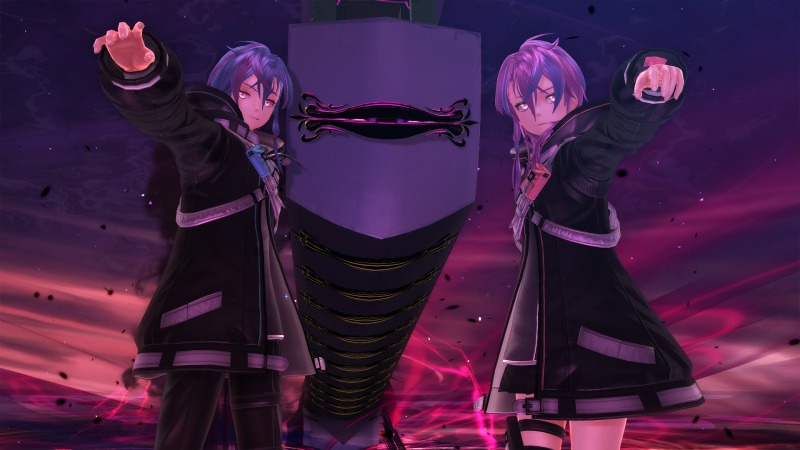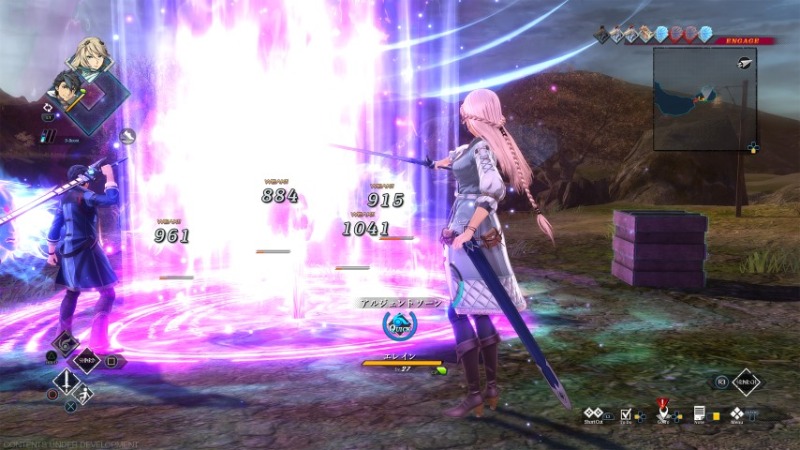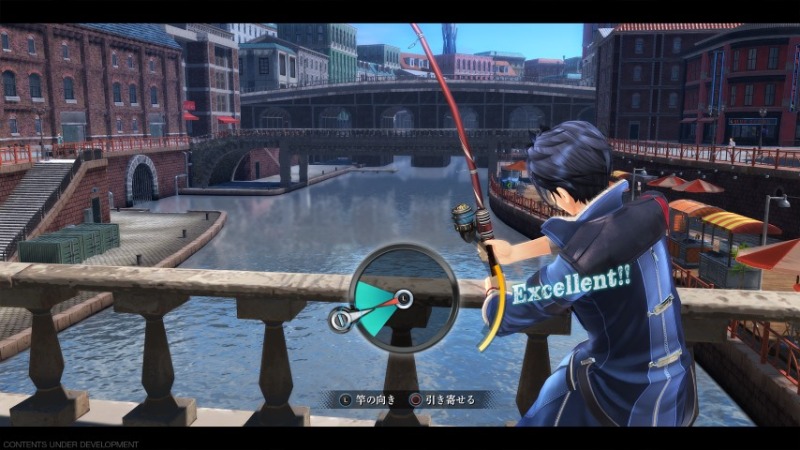The Epic RPG Trails Through Daybreak II Excels at the Big and Small Pictures

Nihon Falcom’s The Legend of Heroes: Trails series is epic, and not in the bacon-flavored way the internet too often uses the word. No, it’s epic in the classical sense: in its scope, in its storytelling, in its approach to the world that it has carefully built over 21 years now, and in the way it’s presented to those who play it brick by brick. Which can make a game like Trails Through Daybreak II a little odd at first blush, as it manages to be both immense and small at the same time.
That’s also part of the strength of Trails as a whole, however: it’s capable of both this large-scale, macro storytelling and long-term narrative, but it also hammers on the zoom button until the storytelling becomes micro instead, and suddenly you’re a person very excited to see a random NPC you know from optional events in old games show up in a different city in a new one. There’s just a lot more of the micro this time around, with Daybreak II not even using much of its time to remind you about where you are at any given moment.
Trails Through Daybreak II picks up mere months after the conclusion of its predecessor, but whereas that game focused on introducing the world to Calvard—the Republic, the one power capable of truly rivaling the empire of Erebonia that was at the center of the previous arc covered in the four Trails of Cold Steel titles—Daybreak II assumes that you already know all about this part of the continent of Zemuria. About its struggles with racism, about the growing power of the presidency and Calvard’s military, about the free cities and peoples that border Calvard, and, to varying degrees, want to either be formal partners with or left alone by the power that is the Republic. It assumes you know the cast—the large cast—whether they were introduced in Trails Through Daybreak in 2023, or in Trails in the Sky FC in 2004, or in Trails of Cold Steel in 2013, or in 2020’s Trails Into Reverie. Or, more accurately, in a series of optional collectible book volumes that you could acquire and read in Trails of Cold Steel IV, whose main characters just so happened to be based on the protagonists of Trails Into Reverie, which also did not exist yet.
Which is to say that Trails is Trails once more, maybe as much as it’s ever been. Meaning, it’s completely impenetrable to first timers, because this game isn’t the first one in the series: it’s number 12, and it expects you to have played not just number 11, but also one through 10. It was amusing to see the occasional nod to Trails Through Daybreak by critics as a good starting point for newcomers, because it was introducing so much new, new, new to players by switching away from Erebonia and (the suzerain, imperially occupied, then finally autonomous) Crossbell to Calvard, but that was always going to be a temporary state. Unless players who kicked off with Daybreak then went back to the beginning of it all and played a lot of Trails in the last year, there was never any chance that the second game was going to feel as friendly to them in this regard. And, once again, that’s great: you wouldn’t start The Lord of the Rings by picking up The Two Towers, so why begin Trails in the middle?
If there’s an actual criticism to be made about Trails Through Daybreak II’s story, it’s that it doesn’t move the overarching story of the series forward by all that much, but this isn’t because nothing happens. In fact, things are happening constantly. The story, though, while involving the Republic of Calvard, has far more to do with its people than anything else. Whether they were born there, or are just visiting, or have immigrated there. Whether they are there legally, or on the run from someone or something, or are the ones doing the chasing. So, if you were looking for a game where Calvard declares war on a neighbor, or someone declares war on Calvard, or anything of the kind of scope that was constantly occurring in the Cold Steel games, you’ll be disappointed. However, if what you want is more of the true narrative strength of those games—the characters, the relationships between those characters, and their struggles with their pasts, presents, and futures—then Trails Through Daybreak II is going to hit for you.

Daybreak II is obsessed with the past of the series, but this isn’t meant as a negative. We’re 20-plus years into Trails now, with the end of it all in sight. Do you know how many loose ends pile up over two decades? How many personal journeys are unresolved, how many merely-hinted-at traumas have remained that way? Falcom has a responsibility to do far more than just make bigger and bigger bad guys and higher and higher stakes each time out: they also have to remember that we care about where Renne came from in the years before we met her, and how she handles facing that past now as she’s grown from pre-teen child assassin to president of the student council at a private high school academy. They have to remember that we care about the young Feri, who was given an impossible task to ask of one so young by her mentor and friend in Daybreak, and how she is handling being pushed out of her warrior tribe for failure in that task, much to the chagrin of her impossibly strong older brother and vice-chief father. We care about the mystery of Quatre, just who Shizuna is and what she’s thinking, about Van, about Elaine, about Van and Elaine.
And Falcom did remember all of that, and far more, in Trails Through Daybreak II, which basically works as a trauma factory—the sharing of, the working through of, the reliving of. What’s at the root of these many individual traumas, how they’ve shaped these characters, why they’ve hidden it from their companions and loved ones, and how they plan to move forward from them. It’s a series of bonding exercises among this group, that also bonds you to these characters, as well, since you’re granted insight into the inner workings of their minds, which Trails games are careful to not show you in full until you need to know, even if they might hint about something dozens of hours (or maybe even years) before revealing the why of that hint to you.
Trails Through Daybreak II might not move the overarching narrative of Trails forward all that much, no, but that’s because it’s busy dragging the series’ past into its present, to prepare for its future. If you’ve already bought in on the larger story being told, and you care about these characters at all, then you’re still going to appreciate what Daybreak II has done. It’s an immensely personal game, one where you’ll find you understand these characters as far more than just tropes by the time it’s over with. They’re people, and three-dimensional ones for more reasons than just their polygons.
Daybreak II is also a Like a Dragon–level masterclass in asset reuse. You go to the same areas as in Daybreak. You meet characters you’ve mostly met before in this same game engine, rendered the same way. Whenever Falcom had an opportunity to do something like simply showing you a text box saying that you entered into a tunnel and came out the other side rather than spending time and energy actually making a tunnel for you to travel through, then that’s what they did. The best of these moments come when yourre going through somewhere you didn’t in Daybreak, so the game just notifies you that the tunnel is too dark to see in via text, before popping you out the other side on a rocky coastline.
None of this detracts from the experience or the quality of the game, however. You’re here for the narrative and the characters, or to crank up the difficulty if you care about mastering all of the nuance of its simplified-yet-still-layered combat system and its min-maxable equipables. So you’re facing a virtual reality recreation of a boss you already defeated in Daybreak? So what. The rewards you’ll get for doing this spend the same the second time around, and it’s all in service of getting to the rest of the package, anyway. Unless you’re the kind of person who was bothered whenever Kiryu was in Kamurocho again, then this is all going to be fine in that regard.
